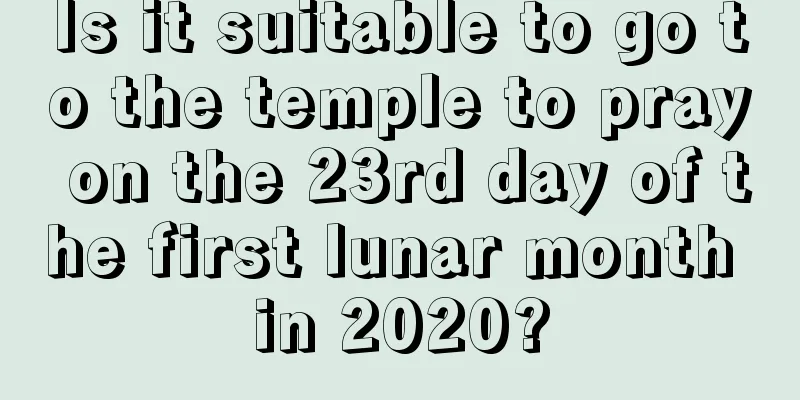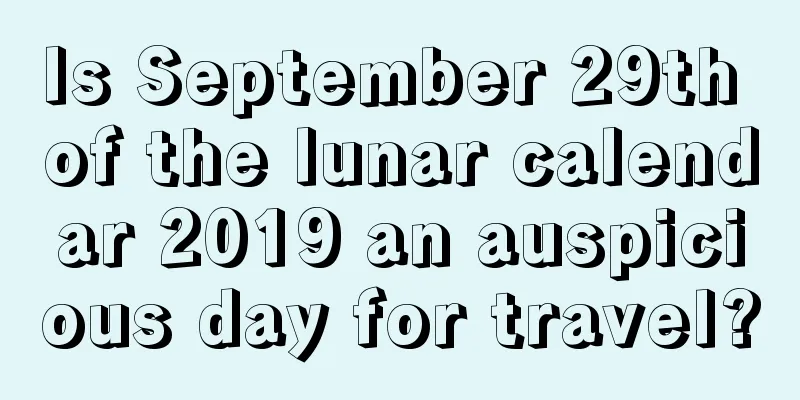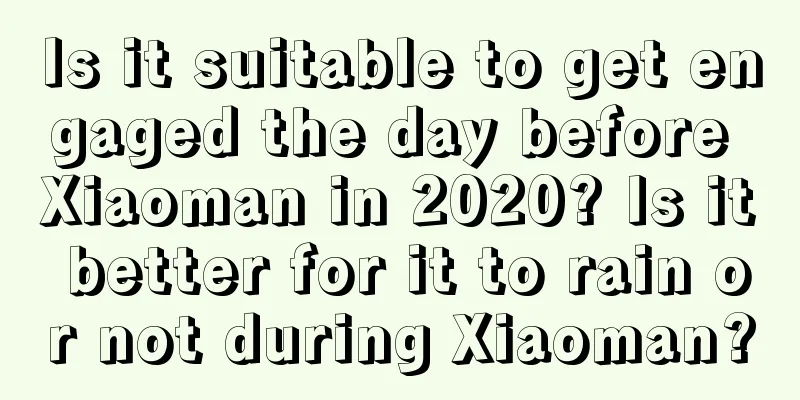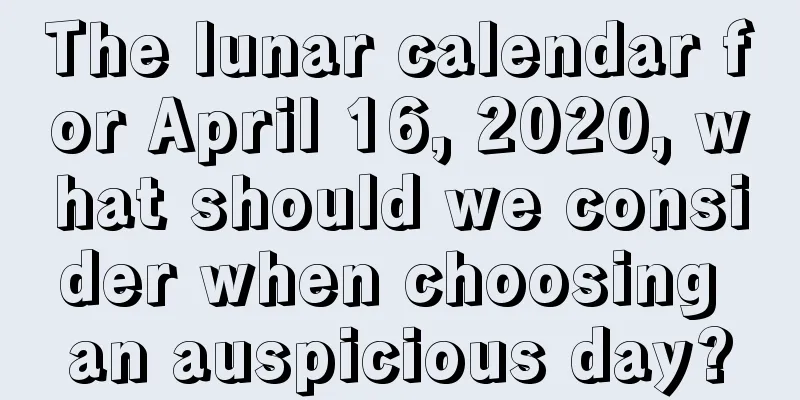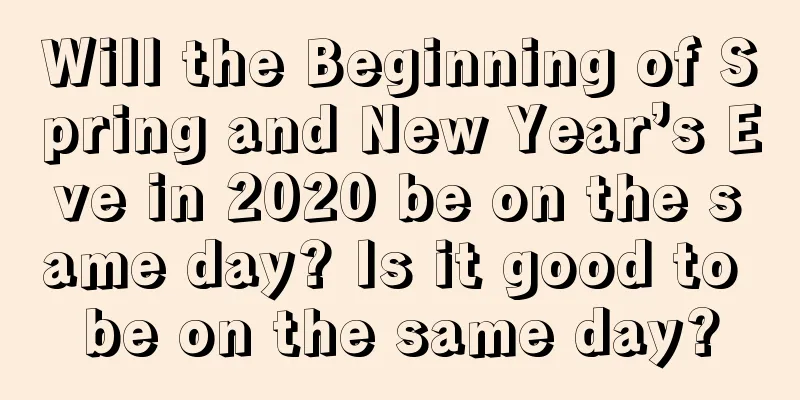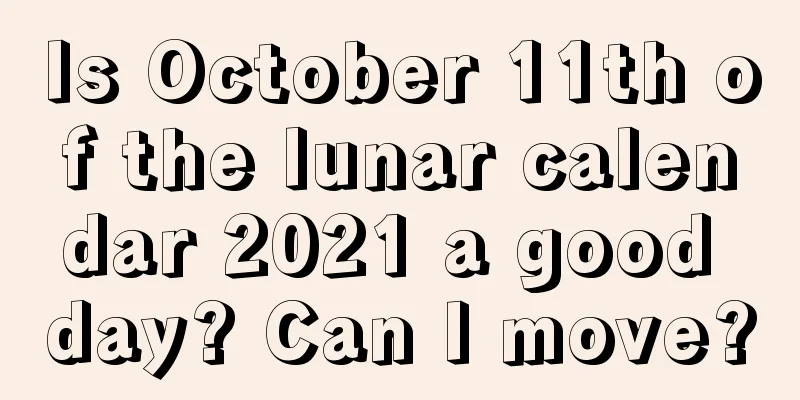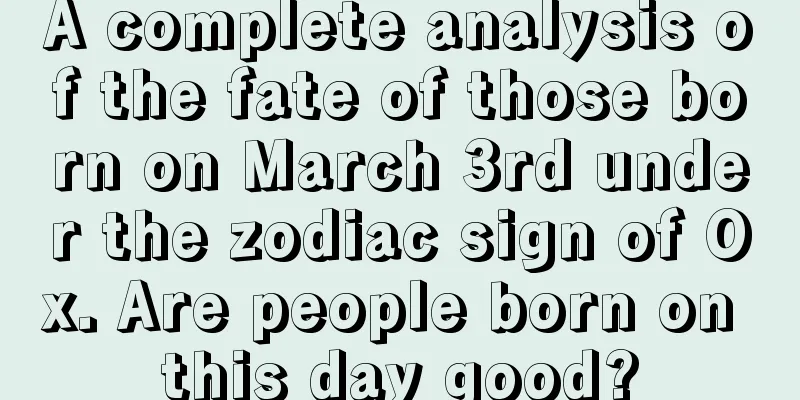Feng Shui Analysis of Mao's Ancestral Grave
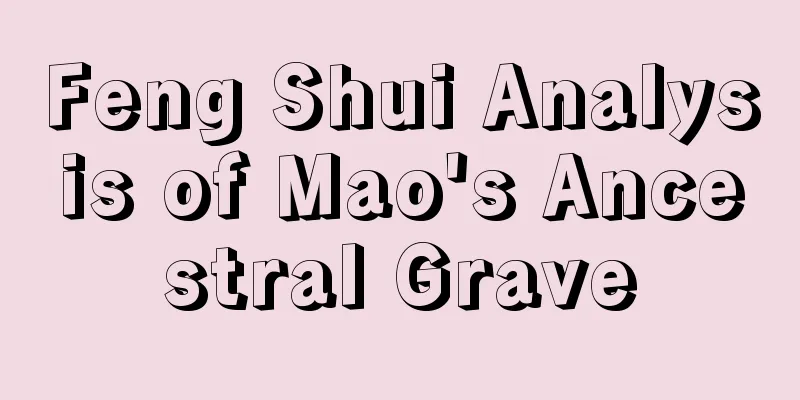
|
Introduction: What is an ancestral tomb? As the name suggests, the ancestral tomb is the tomb where ancestors are buried. Mao is a great historical figure and one of the great leaders of our motherland. He led the Chinese people to establish the new China. So, what is the feng shui of Mao’s ancestral tomb? Does it have anything to do with his success? Let’s find out together! Mr. Shui Mo’s Feng Shui special topic contains more articles about Feng Shui, allowing you to understand Feng Shui knowledge more quickly. Mao was recognized by China as the true emperor, and his ancestral tomb in Xiangtan, Hunan is a precious dragon's lair. During the Kuomintang-Communist War, Chiang Kai-shek sent troops three times to dig up the Mao family dragon vein, but it was cleverly protected by local villagers. Locals say that paying homage to Mao’s ancestral tomb can help you get promoted and make money. The Feng Shui dragon veins can change the world, and even Mao, who doesn't believe in superstition, is in awe of them. It is said that it was because the dragon vein energy from their ancestral tomb helped that they were regarded as a thorn in the side by the Kuomintang army. During the Kuomintang-Communist War, they even sent troops three times to dig up the dragon vein of the Mao family. Chiang Kai-shek even sent people to dig up Mao’s ancestral tomb but they couldn’t find it. So we, the people of Shaoshan, have protected it very cleverly. According to the Mao family genealogy, Chairman Mao’s ancestral tomb is a Feng Shui treasure land where the Heavenly King leaves the palace and nine dragons make a pilgrimage. This is Huxieping, where the mainland leader Chairman Mao was buried. It can be said that there is a green dragon on the left and a white tiger on the right, a hook of flowing water and a fist of mountain, with dragons and tigers crouching here. It is said that this place is known as the mainland's peaceful and blessed land. Coming here can bring you good fortune, and returning here can bring you promotion and wealth. The locals believed that Mao was the true dragon emperor, and the legend of his grandfather's coffin was even more vivid. It was eight years after his death that he was buried and a monument was erected until the first year of the Republic of China. For burial in a Feng Shui treasure land, an auspicious day must be chosen. The auspicious day is chosen eight years later, on the evening of August 15th of the lunar calendar. Therefore, the coffin is kept for eight years and is not buried until eight years have passed. Chiang Kai-shek was forced to Taiwan. Chiang Ching-kuo built a palace on Grass Mountain in Taiwan for his father Chiang Kai-shek to recuperate. The feng shui was very good. Chiang Kai-shek was very happy and asked his son what the mountain was called. Mr. Ching-kuo replied that it was Grass Mountain. Chiang Kai-shek became angry and said: We father and son can no longer rebel against the mainland, and have become bandits. This kind of Feng Shui blessing is effective for yourself. First, the direction of the acupuncture point of Mao’s ancestral tomb is natural, forming the directions of Zi, Wu, Mao, You and the four cardinal directions, which are the directions of the emperor. Secondly, there are huge rocks shaped like a blue dragon and a white tiger guarding Mao’s ancestral tomb, which represent power and nobility. Third, the Mingtang is broad and majestic, and it also presents a scene of soaring into the sky. Mao's ancestral tomb was rebuilt in the first year of the Republic of China in the month of Ren Zi. It was named after the three Mao brothers and faced Xin inside and Xu outside. Water from the right side of the mountain flows down to the left and flows out to the northeast from the Yin Jia position. When water enters the game at noon, the peak of Xun becomes high and beautiful. This is the practice of the Sanhe School of Ganzhou. It is said that in the late Qing Dynasty, Mao's great-grandfather Mao Siduan and a "feng shui master" went into the mountains to chop firewood. When they came to a hill, they accidentally discovered that this place was a "feng shui treasure land" while resting. Mao Siduan decided to leave this place to his two sons: Dechen and Yichen. The two sons discussed and decided that whoever died first would be buried in this "treasure land". In 1904, the younger brother Yi Chen died. In order to verify whether this place was a "treasure land", Yi Chen's son Mao Shunsheng simply parked the coffin next to the cemetery. It was not until 1912 that he was officially buried. Legend has it that at the time of the burial, the cemetery was surrounded by hard rocks, and only the soil where the coffin was placed was loose. When they dug deeper, there was just enough space for one coffin. When the coffin was buried, faint flute sounds could be heard all around. This legend gradually spread, and in the 1920s and 1930s it reached the ears of Chiang Kai-shek, who was superstitious about feng shui. At that time, Mao Yichen's grandson was making revolution in Hunan and Jiangxi. People said that Mao was a god who appeared in the world and a true dragon emperor. The Feng Shui map of Mao’s ancestral tomb is located in Shaoshan Chong, a place with beautiful mountains and rivers and blessed with spiritual energy. The vein of Shaoshan comes from Mount Hengshan in Nanyue. The dragon comes from thousands of miles away and forms a cave here, which is a Feng Shui treasure land. Mount Hengshan, the southernmost peak, rises majestically with a huge body, like a tiger crouching and a dragon looking far to the north. Then it drops in height and rushes northward. Whenever it reaches a place with stunning scenery, it forms a big knot. Once the knot is untied, it continues to head north. When it reaches the western border of Xiangxiang, it is already a hundred kilometers away. It suddenly rises up and becomes its 71st peak - Shaofeng. "A place with extremely beautiful mountains and rivers will surely give birth to extraordinary talents! Although Shaoshan is not in the place where people from Central China travel, it is not a place where poets and writers have visited. It must have the beauty of mountains and rivers. Those who follow the ancient masters will be the glory of the country and the hope of the nation, and will be remembered in the land." Analysis of Feng Shui of Mao's Ancestral TombThe cave originates from Kunlun Mountain, winds across most of China, and ends in Shaoshan. The tomb is located on Huxieping in Dishui Cave. The tall Shaofeng Mountain is Shaozu Mountain; the two arched treasure covers in the middle are Parents Mountain, and then it extends to the Dripping Cave, which is shaped like a lying tiger resting, and its cave is right at the tiger's head. There is a stone drum at the front left of the tomb with a closed gate. It has two tiger feet, one long on the left and the other short on the right, one in front and one behind. The left foot rises and falls gracefully, locking the drain water tightly. The tomb was rebuilt in the first year of the Republic of China in the month of Ren Zi, and was named after the three Mao brothers. It was oriented in the direction of Xin inside and Xu outside. The water from the right side of the mountain flows down to the left and flows out to the northeast from the Yin Jia position. When water enters the game at noon, the peak of Xun becomes high and beautiful. This is the practice of the Sanhe School of Ganzhou.It is said that in the late Qing Dynasty, Mao's great-grandfather Mao Siduan and a "feng shui master" went into the mountains to chop firewood. When they came to a hill, they accidentally discovered that this place was a "feng shui treasure land" while resting. Mao Siduan decided to leave this place to his two sons: Dechen and Yichen. The two sons discussed and decided that whoever died first would be buried in this "treasure land". In 1904, the younger brother Yi Chen died. In order to verify whether this place was a "treasure land", Yi Chen's son Mao Shunsheng simply parked the coffin next to the cemetery. It was not until 1912 that he was officially buried. Legend has it that at the time of the burial, the cemetery was surrounded by hard rocks, and only the soil where the coffin was placed was loose. When they dug deeper, there was just enough space for one coffin. When the coffin was buried, faint flute sounds could be heard all around. This legend gradually spread, and in the 1920s and 1930s it reached the ears of Chiang Kai-shek, who was superstitious about feng shui. At that time, Mao Yichen's grandson was making revolution in Hunan and Jiangxi. People said that Mao was a god who appeared in the world and a true dragon emperor. On June 29, 1932, the Kuomintang sent a grave-digging team to Shaoshan Chong. They went up the mountain at dark to dig up the "dragon vein" of the Mao family and destroy Mao's "dragon spirit". When the grave-digging team walked into Huxieping, they suddenly heard bursts of noises coming from inside and outside the mountain, which made the bandits of the grave-digging team frightened. They thought that it was really the Mao family's ancestral tomb that showed spirits, and that the gods and generals were secretly protecting them. In the panic, they randomly dug up several graves and stole the remains, but Chairman Mao’s tomb was not found. The location of Mao's ancestral tomb is a place called Huxieping. It is said that this place was discovered by Mao's great-grandfather Mao Sirui and a Feng Shui master when they went up the mountain to collect firewood. Originally, Mao Sirui planned to give this Feng Shui treasure land to his two sons. However, there was only one treasure land, and how to distribute it was a problem. So the two sons decided that whoever died first would be buried in this Feng Shui treasure land. The final result was that the younger brother died first. In order to verify whether this place known as a Feng Shui treasure land was really worthy of its name, the younger brother's son, Mao's father, placed the coffin next to the cemetery. It is said that he waited for 8 years before officially burying the coffin. Originally, in terms of soil quality, Huxieping was surrounded by hard stone tiger rocks, but the soil around the coffin was soft, which was just the right size for a burial site. What's even more strange is that when the coffin was buried, there was a flute sound. This news also reached the ears of Chiang Kai-shek, who was also very interested in Feng Shui. On June 29, 1932, the Kuomintang sent a grave-digging team to Shaoshan Chong. They went up the mountain at dark to dig up the "dragon vein" of the Mao family and destroy Mao's "dragon spirit". When the grave-digging team walked into Huxieping, they suddenly heard bursts of noises coming from inside and outside the mountain, which frightened the bandits of the grave-digging team. They thought that it was really the Mao family's ancestral tomb or the tomb of Mao’s grandfather that had manifested itself, and that the divine soldiers and generals were secretly protecting it. In the panic, they randomly dug up several graves and stole the remains, but Chairman Mao’s tomb was not found. When Chiang and Mao were defeated again and again in the confrontation, Chiang decided to take action again, but the people of Shaoshan had learned from the last lesson. They filled Mao’s ancestral tomb with soil overnight, buried the tombstone in the ground, and built several fake graves next to the tomb. Therefore, when the Kuomintang came to dig the graves again, they failed because they could not find the location at all. After liberation, the organizers of the grave-digging were severely punished by the people's government. Note: This place was not originally called Huxieping. The reason is that South China tigers often rest here, so it became famous. Mao's former residenceShaoshan can be described as a Feng Shui treasure land, with the main mountain behind it, a river in front, protective mountains on the left and right, and an illuminated mountain in front. It can be described as a Feng Shui treasure land with all the Feng Shui "water", sand and dragon veins. Two branches are divided from Shaozu Mountain in Shaofeng. One branch goes north to Huxieping and forms a shady area, where Mao’s grandfather is buried; the other branch goes to Wuchang and forms a yang area. Shaoshan Chong is shaped like a blooming flower, with Shangwuchang being the center of the flower. Mao’s former residence is located in the center of the flower, enjoying a perfect geographical location. The house is backed by green mountains and there is a pond in front of the door. Opposite the house is a hill that runs parallel to the back of the house, rising and falling three times, forming three small hills in the shape of a Chinese character "品". The house is located on Ding Mountain and faces Gui Direction. Mountains rise in the Gui, Si, Jia and Ding directions. Water flows from the right in front of the house to the left. Water comes from the Jia Mao direction, stops in the Gui direction, and flows out in the Xin Xu direction. The stars Si, Jia, Gui and Ding mountains are adjacent to Tan, Ju, Wen and Bi, and the Shangyuan mountain star is in power, so great men are born in the second period. This is the so-called "mountains control the population and water controls wealth". Gui water in front of the door is an evil star and it causes the god to retreat, so the Mao family fell into poverty after the first and second periods. Fortunately, Tan Lang was arranged at the water mouth and the city gate was used to remedy the situation.It is worth mentioning that the house is concave in shape, blending with nature and more effectively receiving cosmic energy. Who would have thought that this ordinary Hunan residence gave birth to such an influential figure! According to the book "Exploring the Mysteries of Mao's Hometown and Family" compiled by the Central Literature Research Office, there was an omen on the night before the great man was born. His mother dreamed of a giant dragon raising its head in front of the ancestral temple and incense hall, and also dreamed of flames rising from the mountain behind the house. His father dreamed of a general in golden armor guarding the door of his house. His father asked the general what he was doing there. The general replied: "I am guarding the incense of your ancestors by the order of Heaven." Speaking of the Mao Clan Ancestral Hall, it is also a place with good feng shui. It is a family temple that is prosperous in the 46th period of the Zhongyuan Period: it is backed by green mountains and faces Chenshan and Xu. The Kun direction is Shaofeng, which is sharp like a writing brush and points straight into the sky. The Gengyou and Ganxu directions are high and embrace it. The hall in front is spacious. The bronze statue of Mao stands in the square in front of the ancestral hall. The great man faces the East, as if he is always concerned about the fate of the Eastern nations. According to the Mao family genealogy, Chairman Mao’s ancestral tomb is a Feng Shui treasure land where the Heavenly King leaves the palace and nine dragons make a pilgrimage. To the west of Shaoshan Mountain, there are three peaks: Longtou Mountain to the south, Huangfeng Mountain to the north, and Niuxing Mountain to the west. The Dripping Cave is surrounded by them. It covers an area of about five square kilometers and is reached by only one winding road. Its gap is the Shaoshan Reservoir, which is deep, secluded and elegant. Trees stand tall on three sides, and the rhododendrons are bright red. There are two steep mountains. There used to be a bridge with a stream under the bridge. There is a cave next to the bridge. Even in severe drought, water still drips from the cave, and the echo is melodious, like the rhythm of a piano. This is the Dripping Cave. Just because Mao came from the east, it is called the "Western Cave". Shaoshan Chong is a place with beautiful mountains and clear waters and blessed with spiritual energy. The vein of Shaoshan comes from Mount Hengshan in Nanyue. The dragon comes from thousands of miles away and forms a cave here, which is a Feng Shui treasure land. Mount Hengshan, the southernmost peak, rises majestically with a huge body, like a tiger crouching and a dragon looking far to the north. Then it drops in height and rushes northward. Whenever it reaches a place with stunning scenery, it forms a big knot. Once the knot is untied, it continues to head north. When it reaches the western border of Xiangxiang, it is already a hundred kilometers away. It suddenly rises up and becomes its 71st peak - Shaofeng. "A place with extremely beautiful mountains and rivers will surely give birth to extraordinary talents! Although Shaoshan is not in the place where people from Central China travel, it is not a place where poets and writers have visited. It must have the beauty of mountains and rivers. Those who follow the ancient masters will be the glory of the country and the hope of the nation, and will be remembered in the land." Summary: The above article provides us with a detailed analysis of the Feng Shui of Mao’s ancestral tomb and the Feng Shui of his residence. You can learn about it and expand your knowledge! |
<<: How about the lunar calendar for February 29th, 2017? How are you doing?
>>: Three Feng Shui directions you must pay attention to in 2017
Recommend
Is there a 30th day in November of the lunar calendar in 2019? Recommended good days in November of the lunar calendar in 2019
Introduction: November of the lunar calendar is al...
Is the Qixi Festival on the seventh day of the seventh lunar month in 2021 a good date? Can we sign the contract?
Qixi Festival is one of our country’s traditional ...
Check the horoscope and destiny of babies born on the ninth day of the second lunar month in 2020!
Every baby is the fruit of his parents' marria...
Is February 23rd of the lunar calendar in 2022 a bad day? Can we get engaged?
Mid-February is the second month of spring. Is Feb...
A detailed analysis of the physiognomy of people born on January 1st, the New Year’s Day under the sign of the Ox!
Introduction: The numerology of different people b...
Is the fifth day of the eleventh lunar month in 2018 a suitable time to pick up a new car?
The eleventh month of the lunar calendar is appro...
Is it a good idea to wash the quilt on the Little New Year in 2022? Why is it not good to take a bath on the Little New Year?
As one of my country's traditional festivals, ...
What offerings should be prepared for visiting graves during Qingming Festival? What are the five offerings placed at graves during Qingming Festival?
Qingming Festival falls in the third month of the ...
Is it not possible to cut hair in the beginning of autumn in 2020? What can you do in the beginning of autumn?
Li Qiu, as the 13th solar term among the 24 solar ...
Cold Food Festival 2020 - April 3rd · Can I spend the day before Qingming Festival at my mother's house?
Introduction: There are many things to pay attenti...
When is New Year's Day now? When was it in ancient times?
We all know that New Year's Day represents the...
What is the lunar calendar for the seventh day of the sixth lunar month in 2021? Is it suitable for a caesarean section?
The June sun scorches everything, and the dog days...
What are the titles written on the Ghost Festival bundles, and what kind of paper is put in the Ghost Festival bundles?
There is a custom of burning bundles during the Gh...
Can I install the bed on May 25th of the lunar calendar in 2022? Is this a good day?
May is also known as the month of noon. Is it suit...
Is it a good time to move into a new house on the 16th day of the third lunar month in 2019? What are the characteristics of Grain Rain?
Introduction: China has been a traditional cultura...

